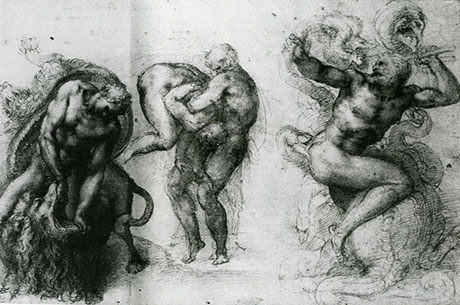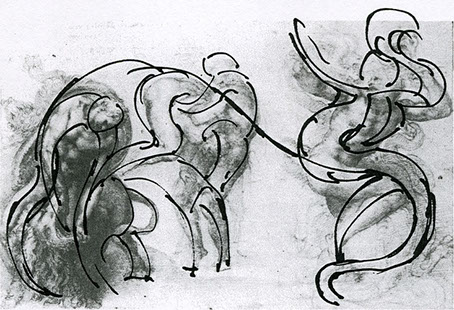GESTURE DRAWING
Gesture is one of the most important elements in life drawing.
Many times gesture drawing is thought of as being “loose” or just “making an expressive drawing”. While these things are true there is more to gesture drawing than just that aspect. If you only think in those terms when doing a gesture drawing you will never really learn what a gesture is and what to be looking for when drawing one.
The primary purpose of gesture drawing is to facilitate the study of the human figure in motion, the essence of a pose and the economy of means in its representation. Ultimately, you learn to see the whole mass of the figure before its parts (the general to specific theory). This study also is helpful in understanding the functions and exertions of muscles and acts as a foundation upon which a more sustained drawing may be based. In addition, when you do short pose drawings you become aware of more elaborate actions that may be missed when working on a long pose drawing. Overall this approach is based on basic lines of rhythm within the figure, which may be expressed through contour, mass and drawing through the forms.
In looking at the whole you will capture the essential movements and attitude of the figure. It is body language and all of the subtle differences that characterize individuals, whether they are human or animal.
When beginning a Gesture Drawing
Start the drawing with simple lines that take in the total action of the figure. Look for the central axis that represents the tilt and lean of your subject. The hardest part of this study is to resist the urge to make a neatly refined drawing of the model. Build on volumes and movements through the form, not only the contour! When you only look at the contour there is a tendency to look only at the outline of the parts, rather than the whole at once and the movements that run through the figure. Only focusing on contour ultimately results in a drawing that is very flat and stiff. It is not wrong to look at the contour, but don’t let that be your only focus of the gesture drawing. Let the contour as well as the thrusts and rhythms with the figure connect with each other. Try to keep your pencil on the paper for the entire pose. You can use differing amounts of pressure on the pencil throughout the pose to call attention to more extreme areas of movement. Just do not make a dark outline around the entire gesture after you have finished drawing through forms. Remember you are not making a mere copy of the model, you are analyzing and interpreting it into a two dimensional representation.
Don’t get frustrated with yourself when doing gestures or longer poses of the figure. Just like any other subject it takes a lot of practice and study.
Click on Images to download

